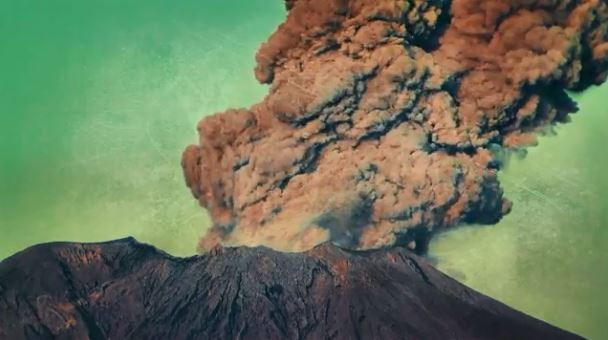Damage to ozone layer possibly drove mass extinction event 252 million years ago
Experiment shows high levels of UV rays temporarily sterilise trees.
A study by University of Berkeley scientists is offering new information about Earth's oldest murder mystery.
The end-Permian event, also known as the Great Dying, was a mass extinction 252 million years ago which killed off seven out of 10 land species and nine out of 10 of those creatures who lived in the water. It is not to be confused with the extinction of dinosaurs 65 millions years ago.
The event has baffled scientists for decades but in new findings a Berkeley research team has drawn a link between high levels of ultraviolet radiation and the appearance of malformed pollen to suggest that radiation had affected the healthy reproduction of forests on a global scale.
Their results were published today (7 February) in Science Advances.
During the end-Permian event, several volcanoes in Siberia erupted, critically damaging the Earth's ozone layer and destroying much of it.
The layer acts as a buffer between the sun's ultraviolet (UV) rays and Earth. There are two types of harmful ultraviolet, UV-As and UV-Bs. The latter plays a key role in the development of skin cancer.
As a result of the ozone layer's destruction, wildlife on Earth was subject to higher levels of UV than it should have been, which could have been one of the main motors driving mass extinction, the Berkeley scientists maintain.

The first clue supporting their theory were malformed pollen fossils discovered by Geoscience Australia in 2005 and dating back to the end-Permian event. The appearance and rise of these malformed pollen matched the decline of forests on a global scale at that time.
The hypothesis linking increased UV to mass extinction could not be proved by these samples alone, however. So scientist Jeffrey Benca created three "mass extinction chambers" in his Berkeley lab where he exposed 60 miniature bonsai conifers to high-intensity UV-B lamps set to emit radiation at 7.5, 10 and 13 times the amount California receives now.
The levels of radiation were in line with the effects of the Siberian eruptions on the ozone layer.
The trees were left in the chambers for two months. Benca's aim was to see if a high level of UV-Bs would cause the bonsai to produce malformed seeds.
He found that they were unable to produce seeds at all. Their seed cones would wither before they had a chance to be fertilised because the high levels of UV radiation had made them sterile. The trees would remain for a while but would never multiply.
Once they were removed from the extinction chambers, however, they regained their ability to produce seeds. That meant that the sterility was only a temporary effect of high-level UV-B radiation.
Benca's experiments backed his hypothesis that high levels of solar radiation caused the Great Dying.






















